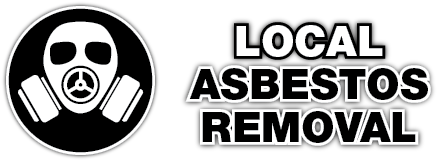SAFE Asbestos Disposal Central Coast
Every property owner or renter must be aware of Asbestos and its danger. If you renovate or modify your dwelling in any way you are exposing yourself and others to the effects of Asbestos.
If you are thinking about renovating, you must be aware of asbestos. It is important for home owners and renovators to be aware of how to safely manage asbestos in and around the home.
Importantly, if you suspect you have asbestos in your home, Dont cut it! Don’t drill it! Don’t drop it! Don’t sand it! Don’t saw it! Don’t scrape it! Don’t scrub it! Don’t dismantle it! Don’t tip it! Don’t waterblast it! Don’t demolish it! And whatever you do… Don’t dump it!
FACT: 1 in 3 Australian homes contain Asbestos
Generally, you don’t need to remove asbestos if it’s sealed and in good condition. If it is asbestos-cement sheeting (fibro), paint it using good quality paint and leave it alone but check it occasionally for any signs of wear and tear. WHAT IF I FIND ASBESTOS THAT HAS BEEN DAMAGED?
If your home was built or renovated before 1987 it will most likely contain asbestos in some form or another. HOW CAN I FIND OUT IF MY HOME WAS BUILT OR RENOVATED BEFORE 1987? Contact your Council. Some have online databases however, not all refurbishments require Council approval. Asbestos may have been introduced to your home if it underwent any renovations, repairs or refurbishments such as replacing/adding floorcoverings or tiles prior to 1987.
When to get the Professionals in?
If Asbestos products need to be removed or modified it is best to call Local Asbestos Removal. We are fully licensed and trained to remove and dispose of Asbestos safely. We have been servicing the Central Coast for over 5 years.
Asbestos Removal in Australian Homes: What You Need to Know
For many Australians living in homes built before the late 1980s, asbestos remains a hidden danger. Once widely used in construction due to its fire resistance and insulation properties, asbestos is now known to pose serious health risks. If you’re planning renovations or even simple maintenance on an older property, understanding asbestos and how to safely remove it is crucial.
What Is Asbestos?
Asbestos is a group of naturally occurring minerals made of fine, durable fibres. It was commonly used in Australian building materials—especially between the 1940s and late 1980s—before its dangers became widely recognised. Inhaling asbestos fibres can lead to severe diseases such as asbestosis, mesothelioma, and lung cancer. Australia began phasing out asbestos in the 1980s, and it was completely banned by 2003.
Common Places Asbestos May Be Found:
Wall and ceiling sheeting (especially “fibro” homes)
Eaves and fences
Roofs and insulation
Vinyl floor tiles and adhesives
Pipe lagging and hot water systems
Why Is Asbestos Removal Important?
Disturbing asbestos-containing materials (ACMs) releases fibres into the air. This can happen during renovations, demolitions, or even minor repairs. Breathing in these fibres, even in small amounts over time, can lead to fatal health issues.
Because of the risks, asbestos removal is tightly regulated in Australia. Both the federal government and individual states and territories have laws in place to protect homeowners and workers.
DIY vs. Professional Asbestos Removal
Should you try to remove asbestos yourself? In most cases, the answer is no.
Why You Should Hire a Licensed Professional:
Safety: Licensed asbestos removalists are trained in proper containment and disposal methods.
Legal Compliance: Regulations differ by state, but in general, professionals must follow strict protocols to avoid environmental contamination.
Peace of Mind: Testing, removal, and air monitoring are done with precision, reducing the risk to you and your family.
Some states allow homeowners to remove small amounts (usually under 10 square metres) of non-friable asbestos themselves, but this still comes with significant health and legal risks. Always check with your local council or WorkSafe authority before attempting removal.
The Asbestos Removal Process
Inspection and Testing: A licensed assessor will inspect the property and take samples to identify ACMs.
Removal Plan: A removalist creates a control plan to manage risks during the process.
Safe Removal: The area is sealed off, workers wear protective gear, and ACMs are carefully removed and bagged.
Waste Disposal: Asbestos waste must be taken to an approved facility and never placed in general household bins.
Clearance Certificate: After removal, an independent inspector may perform air monitoring and issue a clearance certificate.
Cost of Asbestos Removal in Australia
The cost depends on the type, quantity, and location of the asbestos. On average:
Testing: $200–$600
Small jobs (e.g. eaves): $1,000–$3,000
Whole house removal: $10,000–$30,000+
While not cheap, it’s a necessary investment in your health and safety.
Final Thoughts
Asbestos is an unseen hazard that still lingers in many Australian homes. Whether you’re renovating, selling, or just staying safe, knowing what you’re dealing with—and how to handle it—is key. If in doubt, always call in a professional.
Your health is worth it.
